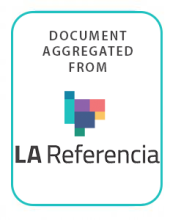Land Library
Welcome to the Land Portal Library. Explore our vast collection of open-access resources (over 74,000) including reports, journal articles, research papers, peer-reviewed publications, legal documents, videos and much more.
/ library resources
Showing items 1 through 9 of 28.With only 7 percent of agricultural land, Tajikistan is a mountainous country located at the heart of Central Asian region, prone to desertification, salinization, soil erosion and forest loss.
With current rates of land degradation reaching
ten to twelve million ha per year, there is an
urgent need to scale up and out successful,
profitable and resource-efficient sustainable
land management practices to maintain the
health and resilience of the land that humans
Context: Recent conceptual developments in ecosystem services research have revealed the need to elucidate the complex and unintended relationships between humans and the environment if we are to better understand and manage ecosystem services in practice.
The study region is one of the most endangered area from wind erosion in the country. This process, coupled with recurrent droughts in last decades and the mishandling of productive practices have generated desertification.
Land is front and center of the sustainable
development and climate change debates. A
goal dedicated to Land Degradation Neutrality
(LDN) (see Box 1) was endorsed in 2015 by the
United Nations (UN) General Assembly as part
of the Sustainable Development Goals (SDGs)
The Patagonian steppe—a massive rain-shadow on the lee side of the southern Andes—is assumed to have evolved ~15–12 Myr as a consequence of the southern Andean uplift. However, fossil evidence supporting this assumption is limited.
Decentralized governance of natural resources is considered one of the key strategies for promoting sustainable
management of natural resources at local level. Effective decentralized natural resource management requires
Land degradation and desertification are among the biggest environmental challenges of our time. In the last 40 years, we lost nearly a third of the world’s arable farmland due to erosion, just as the number of people to be fed from it almost doubled.
As the world’s population continues to rise, there is
an ever increasing demand for our land to produce
a diverse range of products such as food, timber,
and fuel. Our growing need for these goods is
leading to higher levels of competition between








